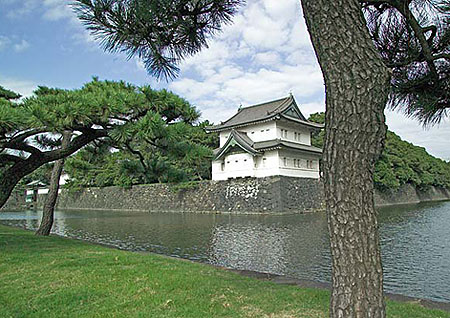![]()
What you must do in this unit
- Read chapter 21 in the textbook.
- Check the course notes on East Asia and Japan: The Seventeenth and Eighteenth Centuries.
- Watch the short video on Japan. (It is not the best video that I've ever made, mostly because I am far from being a specialist in Japanese history!)
- Study the Questions to Consider and the Key Terms for the unit.
- Post (or respond) with your thoughts/ideas/comments about this unit's reading in the discussion board in Canvas: Why did Japan close itself to foreign contact in the seventeenth century (5 points)?
What you can do in this unit
- Check out this exhibit at the Getty Center, Looking East: Rubens's Encounter with Asia
- Louise Kemprecos (summer 2014) created this excellent online timeline on the activities of the Dutch East India Company.
- Have a look at this really interesting timeline by Felicia Laclair (spring 2016) on the History of Asian Cosmetics. Also interesting is the highly-recommended site created by Marsella Howard (spring 2016), A Kimono Exhibit.
- Young Hwa Jin, former student, has created a great online exhibit on Shintoism. And Kiana Bragg put together a nice exhibit (digital project) on Woodblock Printing in Edo Japan.
- Thanh Tran, former student in HIS 112, created a website on the Qing Dynasty.
Some videos that you can watch for this unit
- Samurai, Daimyo, Matthew Perry, and Nationalism: Crash Course World History #34
- Shoguns, Samurai and the Japanese Middle Ages | World History | Khan Academy
- Japanese History of Edo period to Meiji Restoration (1/6)
- BBC The Shogun: Tokugawa Takeover
- Samurai and Bushido
- Chinese Civilization (19) The Qing Dynasty / Part 01
- For extra credit please suggest to your instructor a relevant video for this unit of the course. Send the title of the video, the URL and a brief explanation of why you find the video interesting and applicable to the material that is being studied in this unit.
Extra Credit Options
- For up to 25 points of extra credit, some of the best portrayals/recreations of Tokugawa Japan can be found in the films of Akira Kurosawa (1910-1999), the great Japanese director. I can heartily recommend his Seven Samurai (1954) or Kagemusha (1980) as capturing the complexities of early modern Japan. Consider watching either of these films for extra credit. In a one-page paper, comment upon the historical accuracy of the film that you have watched.
- For up to 10 points of extra credit, read the decrees on the Seclusion of Japan and then submit the Japan paragraph.
- For up to 10 points of extra credit, in a long paragraph consider a comparison of way of the samurai (see Tsunetomo Yamamoto, Hagakure, which is sometimes called the "way of the samurai") with the way of the medieval knight (for example in the Song of Roland). Please be sure to cite your sources. (You may consider writing a longer essay for more extra credit, but only if the second page is very good.)
- For up to 10 points of extra credit, read K'ang-Hsi: The Sacred Edicts (1670) and write a paragraph in which you comment upon the philosophy of government expressed there.
- For up to 10 points of extra credit, read Honda Toshiaki, A Secret Plan for Government (1798), and write a paragraph in which you comment upon the philosophy of government expressed there. (If you want even more extra credit, consider comparing Honda Toshiaki and K'ang-Hsi.)
- For up to 5 points of extra credit, answer the Japan paragraph study sheet questions.
- For extra credit, please suggest a relevant website for this unit of the course. Send your instructor the title of the site, the URL and a brief explanation why you find the information interesting and applicable to the material being studied this unit.
Unit Learning Objectives
- Upon successful completion of this unit, you will be able to (1) demonstrate knowledge and evolution of historical developments in Japan and East Asia.
